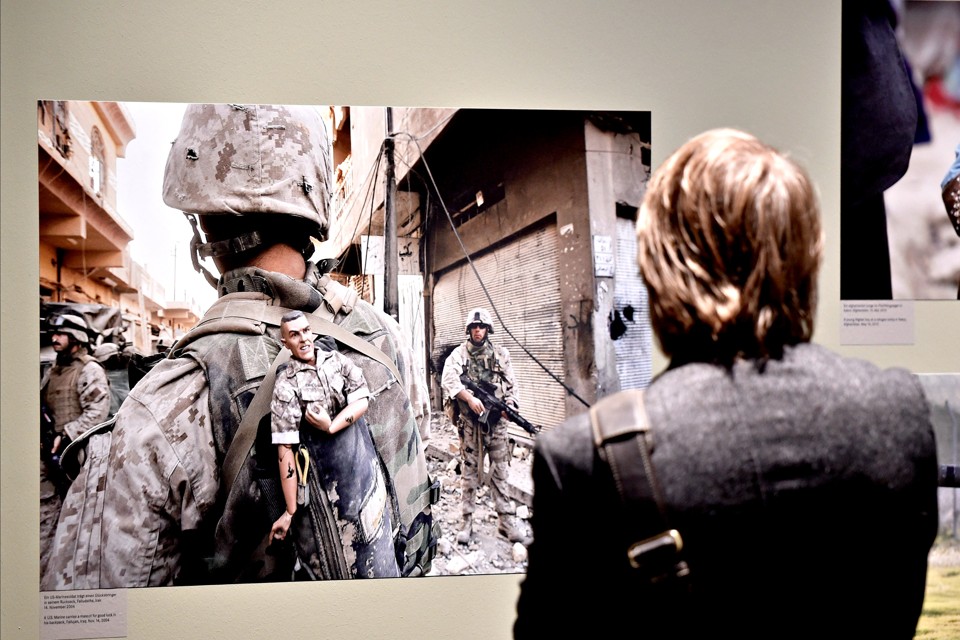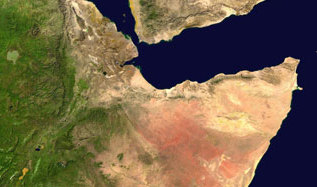PBS: Escaping Eritrea … [Read More...] about ካብ ውሽጢ ቤት ማእሰርታት ኤርትራ
The World According to Men
Chrisitna Asquith |
Many media organizations still portray international affairs through a predominantly male lens—and there are real consequences.

ISTANBUL—For most of the 19th and 20th centuries, women war correspondents were rare creatures—considered intellectual oddities, more likely to be fetishized than taken seriously as news gatherers.
Even as recently as 2002, Vanity Fair was delighting in the exoticism of such women in its story “Girls at the Front,” which profiled the battle-hardened correspondents Christiane Amanpour, Janine di Giovanni, and Marie Colvin. They had sex appeal and well-furnished London homes, and they made up a small brigade of female journalists jetting off to “whatever hellhole leads the news.”
These days, there are so many “girls at the front” that it’s not a story anymore. The New York Times, The Washington Post, and the Associated Press all have female bureau chiefs reporting on ISIS, Syria, Yemen, Egypt, and Libya. In Istanbul, a jumping-off point for covering the region, there seem to be more women freelance correspondents than men. This month’s new film Whisky Tango Foxtrot, in which Tina Fey plays an adrenaline-addicted reporter in Afghanistan, captures how women have broken into the tightly knit, elite foreign-correspondents’ club.
How journalists portray the world has real consequences, and the world is being portrayed through a male lens.
Prizes signal what the industry values. Efforts to win them can drive decisions on which reporters are funded and for which types of projects. Repeatedly awarding men’s reporting over women’s feeds into a cycle that elevates male voices into positions of authority. Male journalists quoted four times as many men as women in a study of 352 front-page New York Times stories in the first two months of 2013. (The same study found that female journalists also quoted men more frequently than women, but the imbalance was not as severe.) The imbalance in awards also reinforces the notion that reporting on combat, mission strategy, and violent conflict qualifies as “hard news,” while coverage of human rights, maternal health, sexual assault, and education—which women more frequently cover—is “soft” news.
Still, rather than reflect a diversity voices, only “13 percent of stories in the news media on peace- and security-related themes included women as the subject,” according to the UN. Only 4 percent portrayed women as leaders in conflict and post-conflict countries. Only 2 percent highlighted gender equality issues at all.
It’s time for foreign correspondents to do a more thorough job of including all the voices of people in the countries they cover—and for media management to reward that effort by giving more weight to stories by and about women. Some of the most memorable reporting in recent years has come from women journalists: Rania Abouzeid of The New Yorker has investigated the rise in forced prostitution in Iraq; Alissa Rubin wrote a two-part series in 2015 on wasteful U.S. spending on women in Afghanistan. Rukmini Callimachi exposed ISIS’s twisted interpretation of the Koran to justify rape. Female photographers are also enriching our understanding of how women experience the world. Examples include Stephanie Sinclair’s 10-year project on child brides, Erin Trieb’s images of Kurdish female fighters, and Lynsey Addario’s work on African women dying from routine procedures in childbirth.
Perhaps the female reporter who best exemplifies the difference women journalists can make is Boston Globe reporter Elizabeth Neuffer, who brought attention to Bosnian rape camps in the 1990s and whose reporting played a pivotal role in the decision by the International Tribunal at The Hague to formally designate rape as a crime against humanity.
Neuffer was killed in a car accident in Iraq in 2003. And she isn’t the only female correspondent who has died while reporting from a war zone. Marie Colvin, a subject of Vanity Fair’s article, was killed in a shelling attack in Homs, Syria, in 2012. Syrian citizen journalist Ruqia Hassan, and the Mexican crime reporter Anabel Flores Salazar were both murdered earlier this year for their intrepid journalism.
Let’s amplify the voices of half the world’s population, and the correspondents who are most likely to broadcast them.

